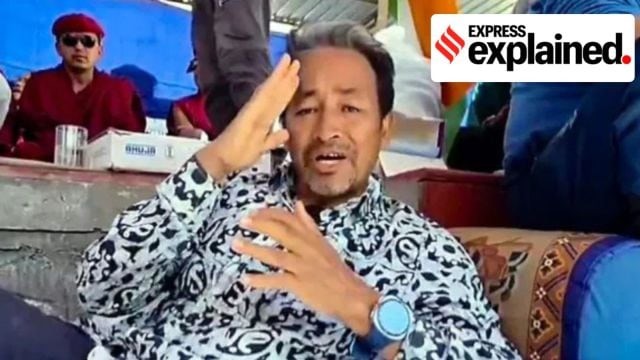National Security Act (NSA)

- 01 Oct 2025
Context:
The detention of climate activist Sonam Wangchuk under the National Security Act (NSA), 1980, has reignited a long-standing debate on the balance between national security and civil liberties in India. Wangchuk, who has been leading the movement for Ladakh’s statehood and Sixth Schedule protections, was detained following alleged provocative speeches that, according to the administration, triggered violent protests in Leh leading to four deaths and several injuries. His case illustrates the continuing tension between state power and individual freedoms under India’s preventive detention framework.
Understanding Preventive Detention in India
Preventive detention refers to the practice of detaining an individual not for a crime already committed, but to prevent them from acting in a manner considered prejudicial to public order, security, or essential supplies. Unlike punitive detention, which follows conviction through due process, preventive detention is anticipatory in nature—aimed at averting potential threats before they materialise.
The Constitutional sanction for preventive detention is provided under Article 22 (Clauses 3–7), which permits Parliament and State legislatures to enact laws allowing such detention. A person can be held for up to three months without approval from an Advisory Board of judges, and longer if such approval is obtained. However, detainees are denied the right to legal counsel before the Advisory Board, and authorities may withhold information on grounds of public interest—limiting transparency and accountability.
Evolution of Preventive Detention Laws
Preventive detention has deep colonial roots, beginning with wartime laws such as the Defence of India Acts and the Rowlatt Act (1919). Post-Independence, the Preventive Detention Act, 1950, institutionalised this power, followed by the Maintenance of Internal Security Act (MISA), 1971, which gained notoriety during the Emergency (1975–77). Although MISA was repealed in 1978, preventive detention returned with the National Security Act (NSA), 1980, reflecting the persistence of this legal mechanism in India’s security architecture.
Provisions and Safeguards under the NSA
The NSA empowers the Central and State governments, as well as authorisedDistrict Magistrates and Police Commissioners, to detain individuals to prevent actions “prejudicial to India’s defence, foreign relations, national security, public order, or essential supplies.”
- Detention orders operate like arrest warrants, allowing transfer across states and detention up to 12 months.
- Grounds for detention must be communicated within 5 to 15 days, and the detainee can submit a representation to the government.
- An Advisory Board of High Court judges must review the case within three weeks and order release if “no sufficient cause” exists.
However, no legal representation is allowed before the Board, and the government may withhold crucial information—leaving wide discretion in official hands.
Use and Misuse: Judicial and Public Concerns
Over the decades, NSA has been used in cases involving separatists, radical preachers, gangsters, and protesters. Notable instances include the detention of Amritpal Singh (2023), Bhim Army chief Chandrashekhar Azad (2017), and Dr. Kafeel Khan (2020). Courts have repeatedly intervened in cases of misuse, emphasising that the Act cannot be a substitute for ordinary criminal law. The Supreme Court’s 2012 ruling striking down detention for kerosene black-marketing underscored this misuse.
Critics argue that preventive detention contradicts the spirit of fundamental rights under Articles 19, 21, and 22, allowing incarceration without trial and enabling governments to suppress dissent under the guise of maintaining order. Scholars contend that Article 22 itself legitimises preventive detention, reflecting what Erich Fromm described as a “fear of freedom”—a societal tendency to trade liberty for perceived security.
Conclusion
The National Security Act remains one of India’s most powerful yet controversial laws. While it provides governments with a vital tool to prevent threats to national security and public order, its frequent and often arbitrary invocation erodes constitutional guarantees of liberty and due process.
The detention of Sonam Wangchuk serves as a stark reminder that preventive detention laws, though constitutionally sanctioned, sit uneasily within a democratic framework. India’s challenge lies in ensuring that security imperatives do not eclipse fundamental freedoms, reaffirming the Constitution’s promise of liberty, justice, and accountability.
